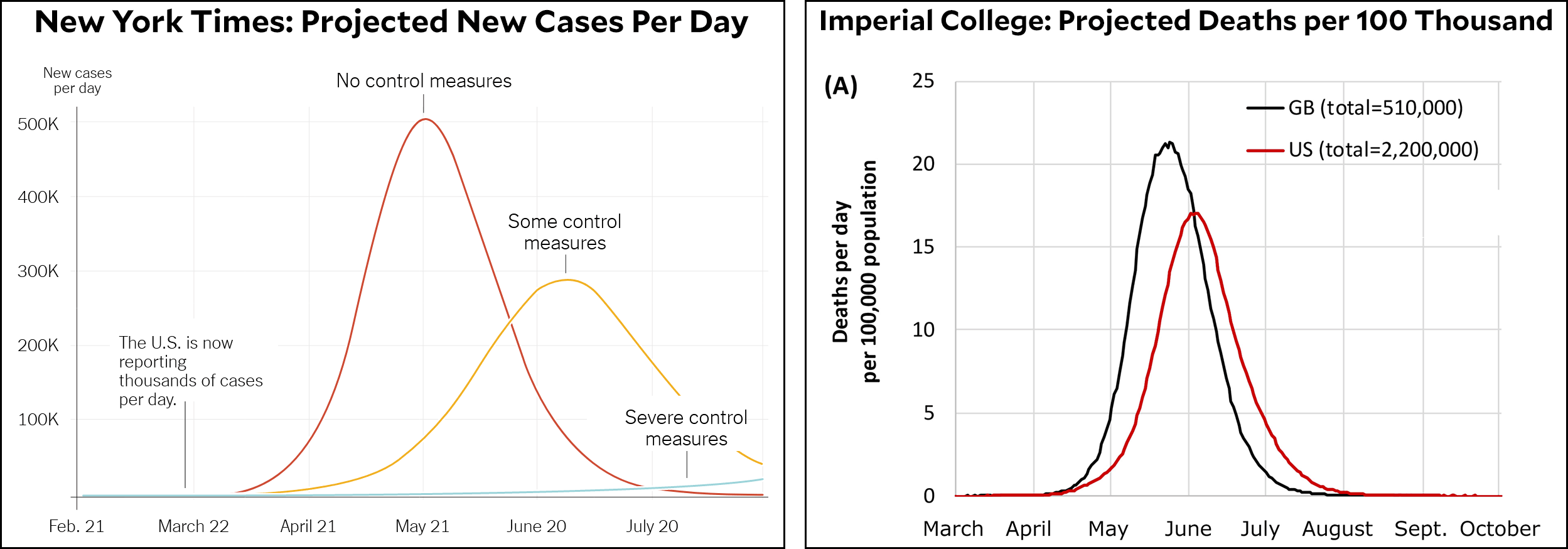A physicist friend who has been pondering the coronavirus numbers emails to share his frustration:
Knowing that the Gaussian has a peak doesn’t tell you when it happens or how big it is. I’ve spent a lot of time trying to find out how variable coronoviruses are but not successfully. So it isn’t clear if the flu model, evolving toward a milder strain, is applicable.
I fucking hate biology. In physics, if you know the past, you can predict the future. There are well formulated, deterministic laws (even quantum laws). Everything in biology is contingent. In retrospect, you can see what caused what, but natural selection is not predictive. It depends on the vagaries of both mutation and predation. Unquantifiable quantities make a physicist scream “Yarbles!”
Quite so. And I happened to run into a great example of this today. As you know, researchers at Imperial College recently released a report with projections about the spread of coronavirus in Britain and the US. Today, the New York Times wrote about one from Columbia University. Here are the most relevant charts:

These are not directly comparable. However, the Times chart is pretty easy to convert to total cases (about 20 million), and from there to total deaths. Using the current consensus estimate of 1 percent for the case fatality rate, the total number of deaths comes to 200,000 by the end of summer in the absence of control measures (red line). The Imperial College chart directly projects 2.2 million deaths by the end of summer in the absence of control measures.
Obviously we are putting in place control measures, so these are not real-life projections. My reason for showing them is that they’re the easiest to compare and they aren’t even in the same ballpark. They’re more than 10x apart. It’s the difference between only 6 percent of the country becoming infected vs. two-thirds or more becoming infected.¹
Unless I did my sums wrong—always a possibility—this leaves us lay folks with nothing to do but shake our heads. Who do we believe?
¹This is the core reason that the Imperial College study has such a high death estimate. Their model projects that 82 percent of the country will eventually be infected, which is a higher projection than most other studies I’ve seen.














